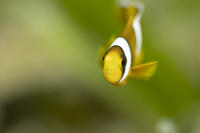Mozambique is home to one of the world’s most diverse hotspots of marine life with 900 species of reef-associated fishes, 400 species of mollusks, 70 species of hard and soft corals, 122 species of sharks and rays, 5 of the 7 species of turtles that exist worldwide, the last viable population of dugongs in the Western Indian Ocean, 740 species of sea and coastal birds, and 2,910 km2 of mangroves. Nurturing these assets are large intact ecosystems, such as the Zambezi River delta, which contains the second largest contiguous mangrove habitat in Africa that provides a nursery for juvenile fish and key marine species⏤the Zambezi mangrove stand has in fact increased in size by around 10% over the past two decades to 37,034 hectares. USAID SPEED has started to support marine conservation efforts in Mozambique.
Biodiversity Conservation
Mozambique has a unique geography with rich biodiversity, making certain landscapes ideal for sustainablenature-based tourism and conservation enterprises. The country's biodiversity conservation area (CA)network, which covers 25 percent of Mozambique’s national territory, has the potential to generateincome for the national economy and local communities, but the revenue currently captured from tourismand sport hunting falls far below the budget required for robust natural resources management efforts.The country’s biological resources are vanishing as a result of expanding subsistence agriculture,deforestation for charcoal production, illegal logging for export, wildlife poaching and trafficking, miningand extractive industries within and proximal to the conservation areas, illegal/undocumented/unreportedfishing, and urbanization. These threats, combined with weaknesses in the implementation of nationallegislation on conservation, contribute significantly to the degradation of ecosystems, loss of biodiversityand negative impacts on livelihoods through the loss of crucial ecosystem services.
SPEED is expanding Mozambique’s institutional capacity to combat wildlife crimes, improving its management of biodiversity areas, and improving the enabling environment for conservation and climate finance. This is being achieved through direct technical assistance and coordination support to relevant government ministries as they lead the way to implement policies to combat wildlife trafficking, including to improve wildlife crime prosecution. SPEED also provides grants to support effective management of conservation areas and generate evidence for sector growth and future policy reform.

